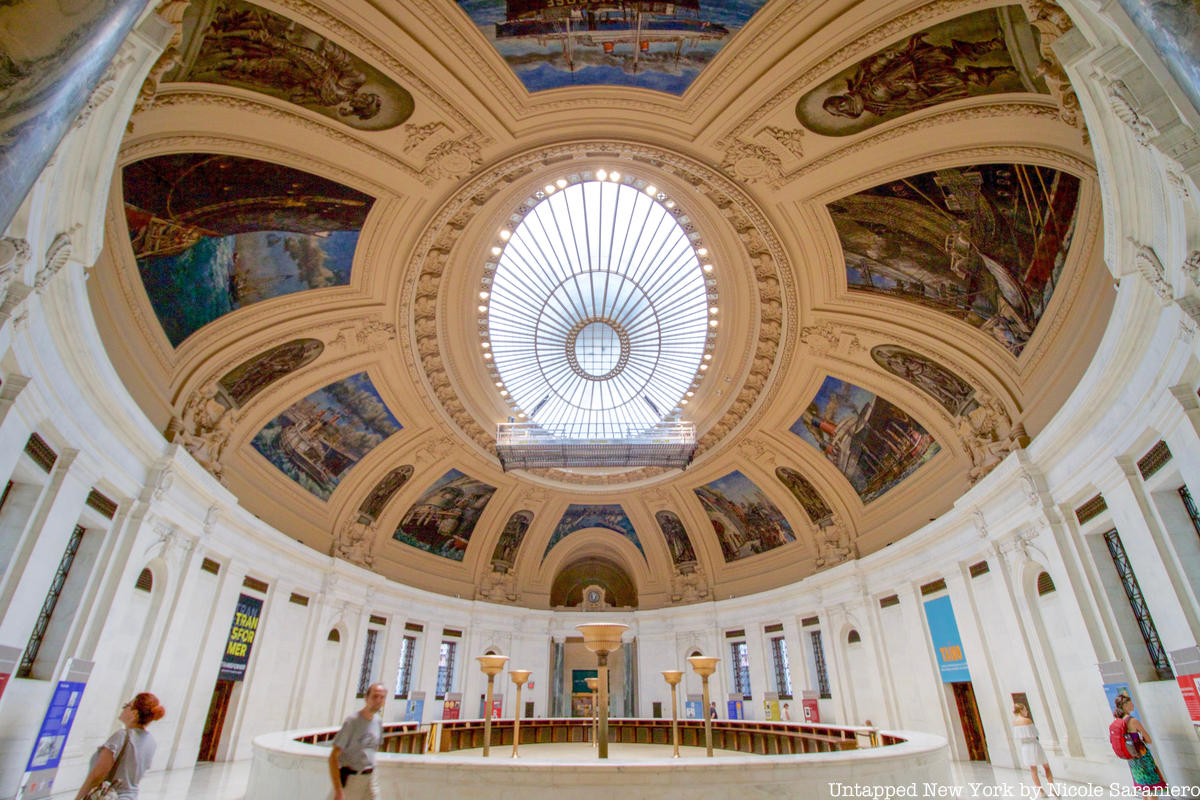The Alexander Hamilton Custom House, now the National Museum of the American Indian, was built to impress. Designed by noted architect Cass Gilbert, the Custom House was the first building merchants and traders sailing into Manhattan’s Port of New York would visit to pay their duties, The building purposefully faces Broadway instead of the Port, so those entering could see the impressive thoroughfare and Bowling Green and be dazzled by the bustle of New York City. Massive sculptures and ornate stonework add grandeur to the facade, and inside, the building is just as magnificent. Walking into the landmarked building’s rotunda, a massive domed ceiling and skylight created by the masterful Guastavino Company are revealed. The Custom House is one of many hidden-in-plain-sight Guastavino masterpieces we will explore in an upcoming virtual tour of Guastavino’s New York!
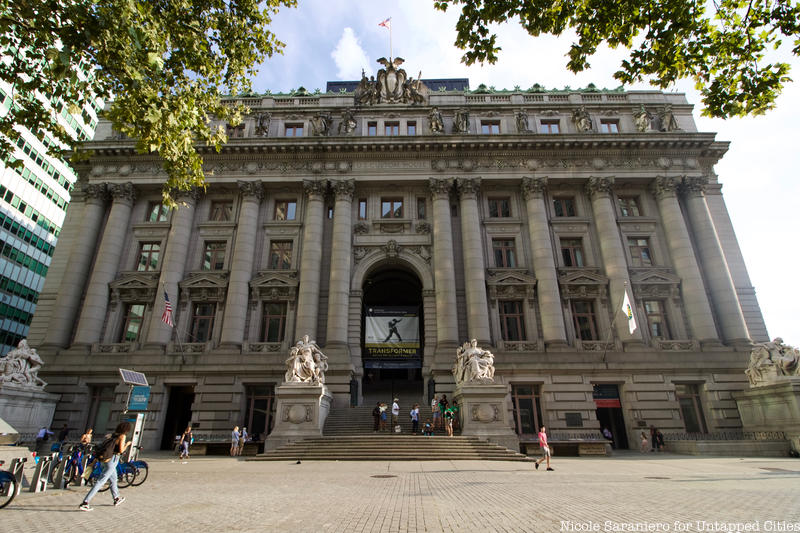
When Cass Gilbert sent the Guastavino Company his 1899 plans for a 130 by 85-foot elliptical dome with a skylight in the center, he didn’t explain how it would be structurally supported. The Guastavino father and son engineering duo were often tasked with transforming vague and ambitious architectural plans into real structures. For Gilbert’s Custom House dome, Guastavino Sr. created a “double-tile dome with an elliptical steel compression ring at the top and a steel tension ring at the bottom,” as explained in Guastavino Vaulting: The Art of Structural Tile by John Ochsendorf. The skylight weighs 140 tons and is supported by the dome thanks to Guastavino’s innovative vaulting method. The recognizable Guastavino-style vaulting with its cross-hatch tile is hidden behind the dome you actually see!
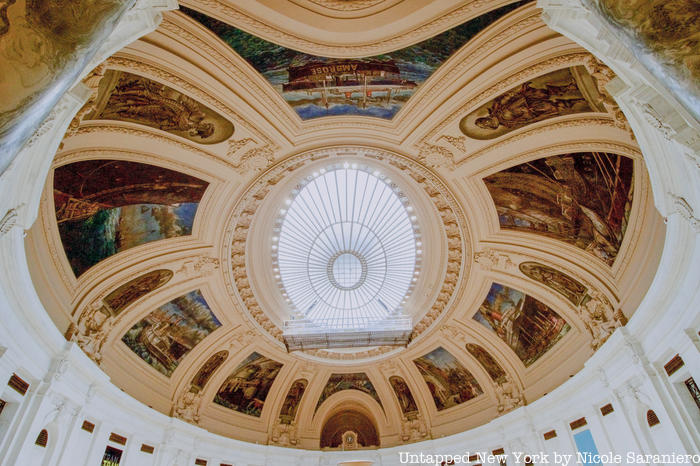
When you gaze up at the dome today, you see beautiful murals painted by Reginald Marsh. Those paintings were not part of the original design but were added in 1937. The murals were commissioned by the Treasury Relief Art Project, an offshoot of the Works Progress Administration. Marsh’s art covers 2,300 square feet of the vaulted ceiling. With help from eight assistants, it took only three months to complete the project. Marsh paid his assistants $1.50 an hour and took only ninety cents an hour for himself. The entire project cost $3,000, surely much less than just one of the paintings is worth today. The murals depict port scenes of various ships arriving and departing, with interpretive portraits of famous early explorers like Henry Hudson and Giovanni da Verrazzano in-between.
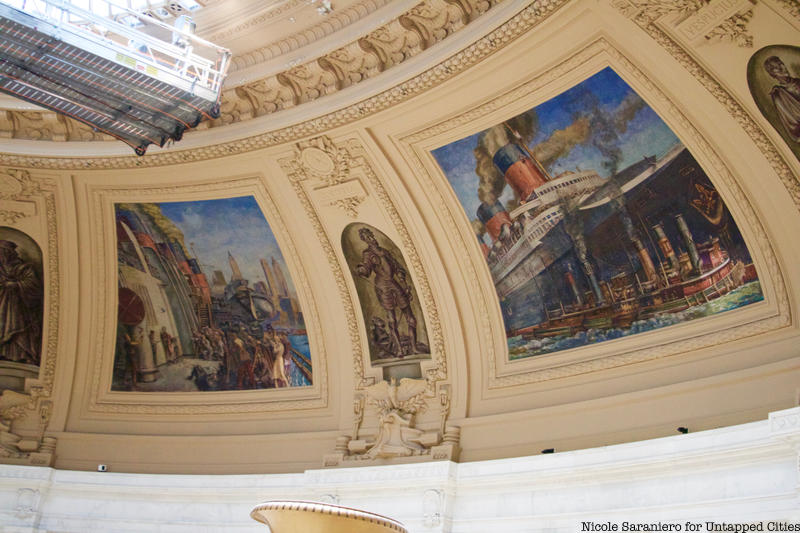
You can find more of Guastavino’s work in the staircases of the Custom House. The spiral shape was inspired by the shells of the nautilus, an aquatic mollusk. This design feature is in-line with the decorative nautical theme found throughout the Custom House, where ornamental shell shapes, waves, anchors, dolphins, and ship bows are a common sight. The staircases employ the same innovative vaulting methods as the rotunda dome.
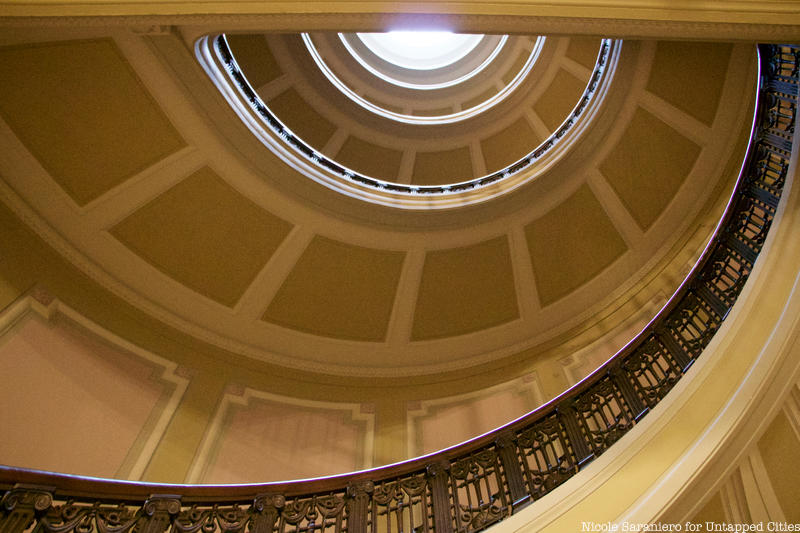
The Museum of the American Indian, which now occupies the building, is currently closed due to COVID-19. However, when the museum is open, you can visit for free and see the rotunda inside, as well as the museum’s exhibits! The Guastavinos were a prolific pair who left their mark on many of the city’s most iconic buildings. You can discover the most magnificent examples of Guastavino’s New York City in our upcoming virtual tour on Thursday, January 7th.
Guastavino’s New York virtual tour is organized for Untapped New York Insiders. Not an Insider yet? Become a member today and get two months free with code JOINUS, then membership is just $10/month. A video of the tour will also be made available to all our Insiders afterward in the Video Archive section of our website. Already an Insider, register here!
Next, check out 15 Beautiful Locations to Find Guastavino Tiles in NYC and Penn Station Renovations Reveal Guastavino Ceilings in Lost IRT Subway Passageway






